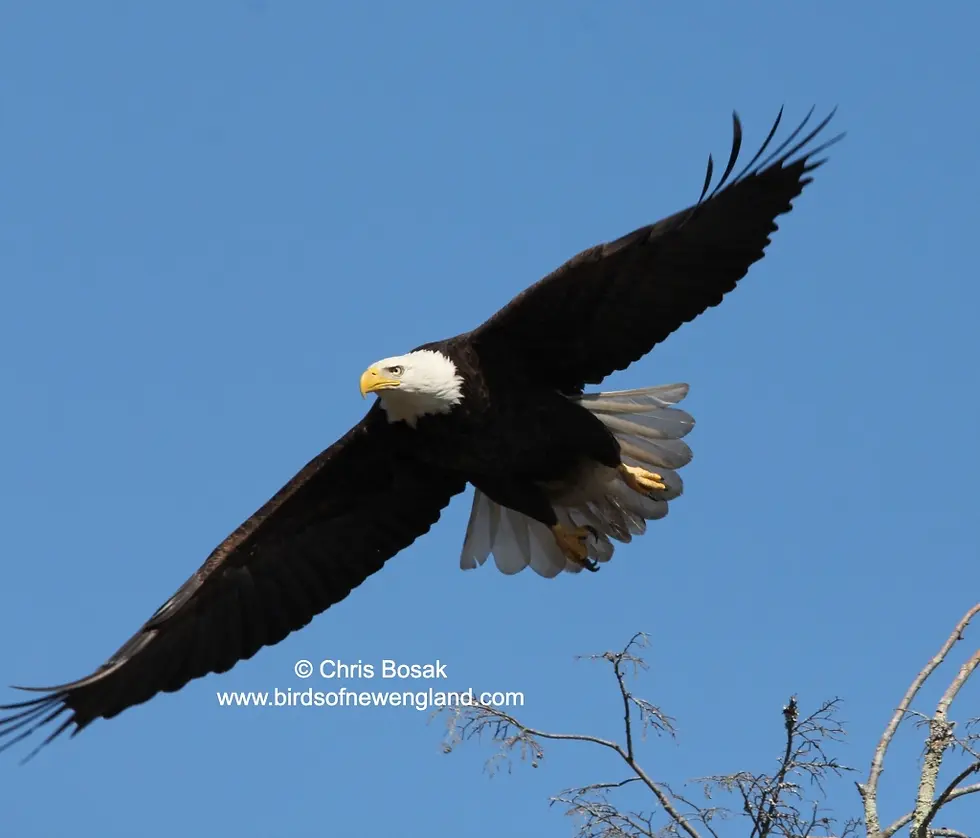Bald Eagles Are Soaring Again in New England
- Christopher Bensley

- Jul 18
- 2 min read
By Chris Bensley
Want to learn more and see conservation in action? Join us on Exploring Birdlife in the Squam Lakes Region next Monday, July 21st.

When I spotted a lonely bald eagle on a canoe to trip along the Allagash River in 1972, I imagined it was to be my last. That year Audubon reported there were less than 800 nesting pairs in the lower 48 states. These iconic birds—symbols of strength and freedom—were on the edge of extinction.
The main culprit, DDT, caused eagle eggshells to become so thin they’d break before hatching. Add that with habitat loss and human disturbance, and things looked grim. But with the DDT ban and the introduction of the Endangered Species Act, the tide began to turn.
Fast forward to 2025, and the skies over New England are looking a whole lot more majestic. Bald eagles are back, and their comeback is nothing short of amazing, thanks to decades of conservation work, better environmental laws, and lots of help from volunteers and wildlife organizations.
Take New Hampshire, for example. In the late 1990s, there were only about 20 known territorial eagle pairs in the whole state. Now over 100 pairs are nesting across the state. NH Audubon, working with the New Hampshire Fish and Game Department, has been at the center of this effort—relying on volunteers to monitor nests and track eagle activity.

Massachusetts has had a similarly inspiring turnaround. Bald eagles were removed from the state's endangered species list back in 2007, and as of 2024, there are at least 88 territorial pairs in the state. In Vermont, the story is just as exciting. Bald eagles were taken off the state endangered list in 2022, and now there are more than 45 territorial pairs spread out across the Green Mountain State. Plus, the restoration of the bald eagle is happening all over the country.

For now, seeing a bald eagle soaring glide effortlessly above a lake or perched in a tall pine tree feels like a celebration. Their return is one of the region’s greatest conservation success stories—and a powerful reminder of what can happen when people come together to protect the natural world.




Comments